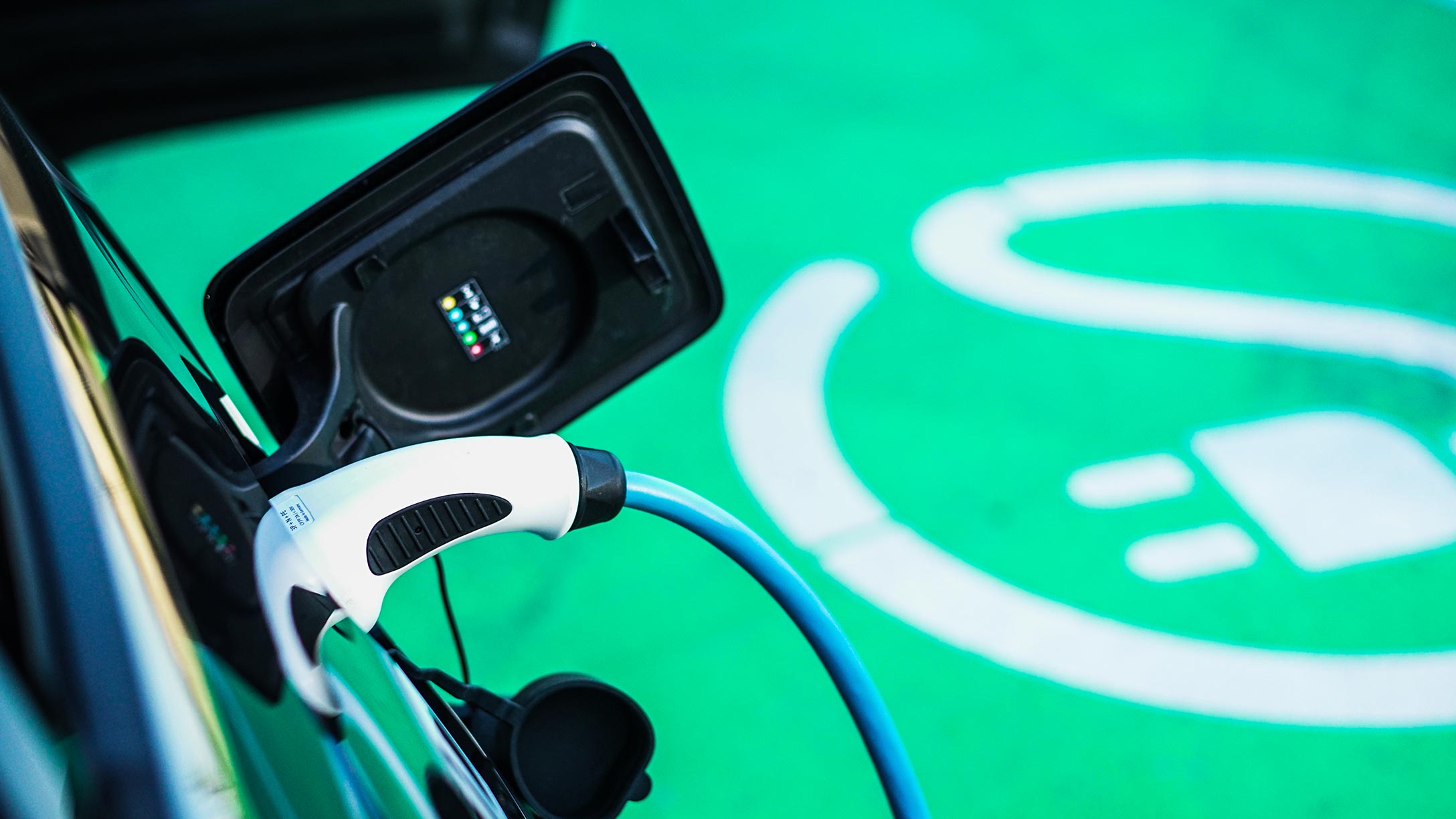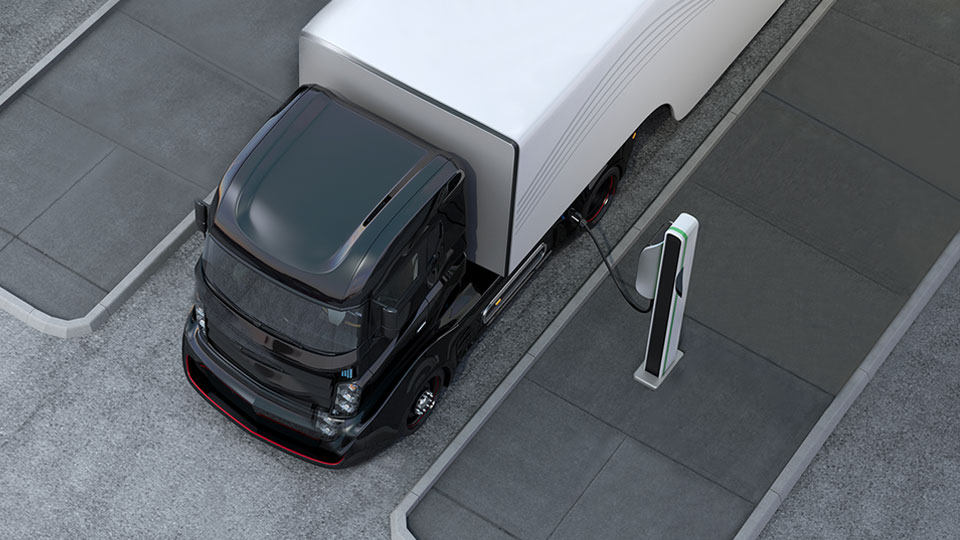
Government fleet electrification: Making the transition to EVs

Table of Contents
- Government fleets are preparing for a greener future
- A real impact on the environment
- Sustainable fleet leaders
- Making the switch to electric vehicles
- Maximum range
- Current running costs
- The role of telematics
- Performing an Electric Vehicle Suitability Assessment
- Operational requirements
- Financial analytics
- Environmental impact
- Ensuring the rollout is successful
- Conclusion
Government fleets are preparing for a greener future
Whether driven by federal mandates to reduce emissions, the need to balance budgets by lowering operating and fuel costs or simply trying to get ahead of the inevitable transition to EVs, government fleet managers are increasingly shifting towards exploring the idea of electrifying their fleets. When it comes to fleet electrification, government agencies at all levels have a unique opportunity to lead by example. While more technologically advanced electric vehicle models are becoming more widely available and upfront costs decline, government fleet managers are beginning to uncover the potential lifetime financial benefits of EVs as they build their plans for electrification.
A real impact on the environment
The global transportation sector accounts for the largest portion of greenhouse gas (GHG) emissions and so it’s no surprise to see aggressive emissions reduction goals along with EV incentives and adoption policies emerging across cities around the globe. While governments are not directly responsible for the majority of transportation emissions, the push to electrify is one way governments can influence others by their actions. Environmental champion California signed a carbon neutral order and looks to have electricity 100% renewable by 2045. Several nations have committed to banning sales of cars powered by internal combustion engines: Norway (by 2025), India (by 2030), France and the UK (by 2040). China, the world’s largest car market, has considered the idea, and in the meantime has imposed some of the planet's most stringent environmental standards.
Sustainable fleet leaders
As the idea of fleet sustainability continues to gain traction, sustainable fleet managers are increasingly championing electrification as part of their sustainability plans. Sustainability fleet leaders are responsible for ensuring that all necessary actions are taken to integrate environmental accountability into agency day-to-day decision making and long-term planning. Sustainability leaders can shepherd in successful programs and policies for energy efficient, low carbon practices which can be integrated into government fleets across all levels of government – federal, state and local. When paired with telematics data, fleet sustainability efforts that include EVs can ultimately help reduce costs, improve fleet efficiency and meet environmental mandates.
Making the switch to electric vehicles
What does all this mean for fleets? The move to zero-emissions is gaining traction at every level of government, as the pressure to switch to EVs grows. As government fleet managers navigate the path to electrification, they’re uncovering opportunities and challenges along the way.
Some of the common questions fleet managers will face on their EV journey are:
- Do all fleet vehicles need to be fully electric? If not, which vehicles in the fleet are the right candidates for switching?
- Is switching to EVs going to be viable both operationally and financially? Can EVs even do the job?
- How many electric vehicles to purchase, and when?
- Which EV models are available in the local market?
Answering these questions will help government agencies build an effective EV adoption strategy. Two of the biggest adoption factors fleet managers must take into account are financial considerations and range.
Maximum range
The maximum range of an EV varies depending on the make and model. Understanding both the maximum range available and the maximum daily range required for a specific fleet vehicle is vital in order to choose the right EV for the job. Do you need a long-range battery EV, with a range over 200 miles? Or will a short-range battery do the job? Is partial electrification with a plug-in hybrid best, given that you are driving 400 miles regularly in one day?
Range anxiety is the fear that an EV won’t have enough range to complete its duty cycle on a single charge, forcing it to return to base in order to recharge – costing fleets valuable time and money. This fear is based on the very early days of electric vehicle adoption, where drivers often found manufacturers’ mileage claims to be greatly exaggerated.
Thanks to new generation lithium-ion batteries, EV manufacturers have made significant investments to increase the range of newer models. Many light-duty EVs are now capable of driving up to 300 miles on a single charge. However, while EV technology has improved dramatically over the past several years, range anxiety is still often cited as one of the main reasons fleets have not yet made the switch to EVs.
Current running costs
Understanding the current costs associated with the vehicle you are looking to replace can help facilitate choosing an EV that will save you money in the future. The manufacturer’s suggested retail price (MSRP) and bid prices of electric vehicles are often higher than conventional internal combustion engine (ICE) vehicles. The higher price tag of an EV is often the second objection fleets have to adoption.
However, this difference in price can often be overcome through the considerable operational savings that EVs offer. With EVs, there are no engines to service, which means there’s also none of the associated equipment either. Spark plugs, fuel filters, transmissions, radiators, and other gasoline-specific components are a thing of the past. And, with regenerative braking, the electric motor does most of the work, saving EV owners money on brake pads and rotors.
Understanding your expenses today, and comparing that to the future costs of an electric vehicle can help you determine whether a switch to EVs makes sense for your fleet. Data gathered from your fleet can help with creating an accurate assessment of whether or not a switch to EVs will lead you to break even, or ultimately reduce your fleet budget. But before a detailed assessment can be performed, fleets must be equipped to gather data through telematics.
The role of telematics
Telematics is a method of gathering real-world data from connected vehicles that provides insights to help fleet operators efficiently manage their fleets. Without telematics data to inform decision making around fleet electrification, fleet operators are left making assumptions, which limits their ability to accurately measure the benefits. With access to existing fleet data through telematics, fleet operators can accurately address the concerns around cost and operational range. They can gather daily driving distance readings to compare against the real-world range of EVs available in the market. Plus, fuel consumption readings can refine the fuel savings calculations and increase the accuracy of the financial model.
Performing an Electric Vehicle Suitability Assessment
An Electric Vehicle Suitability Assessment (EVSA) is a tool that assists a fleet in creating a blueprint for electrification. The EVSA delivers the data analysis needed to make the case to transition your fleet to electric in a way that makes sense for the organization’s budget and time frame. Based on real-world driving profiles, an EVSA will recommend the best candidates within the fleet to electrify.
The Geotab EVSA leverages three data sources to make a recommendation:
- Driving telematics data collected by in-vehicle GO devices
- Geotab’s simulation data for various EV makes and models
- Localized costs database curated for the EVSA
By analyzing high-fidelity vehicle trip data and engine diagnostics, the EVSA makes it possible to receive EV procurement recommendations that fit each vehicle’s driving profile while also understanding the total cost of ownership when switching to EVs.
The Geotab EVSA answers the most pertinent electrification questions including:
- Will an EV be able to perform the required tasks in my fleet and meet my driver’s range requirements even in extreme weather conditions?
- Which vehicles in my fleet are the best candidates for replacement by EVs?
- What will the impact of EVs be on my fleet’s operational budget?
- By how much will my fleet’s carbon emissions go down?
.png)
Sample EVSA report compares range and lifetime cost analysis for EVs to non-EVs within the fleet
Operational requirements
Before replacing an ICE vehicle with an EV, it is critical to ensure that it can complete the required daily range. An EVSA will analyze the daily driving range requirements over a specified time period to verify that the selected EV can complete the required distance on a single charge.
The EVSA looks at each fleet vehicle and calculates the longest daily driving distance recorded. This is then compared to an EV’s worst-case range to determine if it is range capable for the job. EV worst-case range verifies that the EV can perform its daily requirement, even in extreme weather conditions. It takes into account performance in the fleet’s area of operation when battery deficiency is diminished and the heating/cooling system is on all day. It’s also worth noting that Plug-in Hybrid EVs (PHEVs) are always range capable considering their ability to switch to a traditional gas engine.
Ensuring that an EV can perform the same job and meet range requirements are the biggest elements of the electrification process. An EVSA can arm government fleet managers with data-driven recommendations on the ideal candidates for replacing vehicles based on their unique duty cycles.
Financial analytics
After confirming that there are EVs capable of doing the job required, it is also important to understand the financial impact of acquiring EVs. Ultimately, it’s critical to examine whether or not the switch can potentially save the fleet money over the lifetime of the vehicles.
To determine whether an EV is a cost-effective replacement, the EVSA looks at each selected fleet vehicle and calculates the lifetime costs of two scenarios:
- Replacing the vehicle with an EV
- Replacing the vehicle with a new non-EV
If the EV’s lifetime cost is lower than that of the non-EV, then that EV is recommended as a replacement for the fleet vehicle.
The following cost components are considered when calculating the lifetime cost:
- Vehicle acquisition costs (whether it’s a purchase or a lease)
- Maintenance
- Fuel & electricity
- EV incentives
- Tolls for non-EVs or low emission zone charges
- Vehicle registration & taxes
- Insurance
The EVSA gives fleet managers a clear picture of the changes in cost structure should they elect to acquire EVs. Typically, the upfront acquisition costs are higher for EVs and with budgets already tight, government fleet managers may have a difficult time making the business case for the switch. However, examining the total cost of an EV over its lifetime shows significant cost savings on fuel and maintenance that often make up the difference in upfront cost.
Environmental impact
Sustainability efforts are driving North American fleets, including those in government agencies, down the path to electrification faster than ever. EVs provide a great opportunity for fleets to reduce their fuel consumption and carbon footprint. Consider even just the immediate impact of eliminating idling emissions from the fleet. With the environmental regulations discussed earlier weighing heavily on fleets it’s no wonder that a growing concern is the ability to quantify the emission reductions when switching to EVs.
By helping fleets calculate their tailpipe emissions reduction, fuel cost savings and any congestion toll savings, the EVSA is an invaluable tool for operators considering the adoption of EVs into their fleets.

CO2 emission summary calculates the projected carbon footprint of the fleet
Ensuring the rollout is successful
Once EVs are brought into the fleet, it’s imperative that fleet operators are able to monitor their performance similar to their ICE counterparts within the fleet. This is why a telematics solution that captures the necessary data off EVs is so important to understand the overall efficiency and productivity of the entire fleet. The Geotab platform is capable of providing critical performance metrics for EVs such as energy efficiency and range analysis, charging status and history as well as a live look into state of charge. For more information on government EV fleet management, visit https://www.geotab.com/government-electric-vehicles/.
Conclusion
With federal mandates looming and the need to reduce emissions ever-present, government fleet managers are increasingly evaluating the benefits of electrification. With more technologically advanced EV models available than ever before, government agencies are well positioned to lead by example by electrifying their fleets to prepare for a greener future. The EVSA is vital to fleet operators weighing the switch to EVs. With real-world, fleet-specific telematics they can make informed decisions about the benefits of bringing EVs into their fleet. To learn more about how Geotab and the EVSA can help you go electric, visit geotab.com/evsa
Post Tags
About Geotab
Geotab is a global leader in connected vehicle and asset solutions, empowering fleet efficiency and management. We leverage advanced data analytics and AI to transform fleet performance, safety, and sustainability, reducing cost and driving efficiency. Backed by top data scientists and engineers, we serve over 55,000 global customers, processing 80 billion data points daily from more than 4.7 million vehicle subscriptions. Geotab is trusted by Fortune 500 organisations, mid-sized fleets, and the largest public sector fleets in the world, including the US Federal Government. Committed to data security and privacy, we hold FIPS 140-3 and FedRAMP authorisations. Our open platform, ecosystem of outstanding partners, and Marketplace deliver hundreds of fleet-ready third-party solutions. This year, we're celebrating 25 years of innovation. Learn more at www.geotab.com/apac, and follow us on LinkedIn or visit our blog.
© 2025 Geotab Inc.All Rights Reserved.
This white paper is intended to provide information and encourage discussion on topics of interest to the telematics community. Geotab is not providing technical, professional or legal advice through this white paper. While every effort has been made to ensure that the information in this white paper is timely and accurate, errors and omissions may occur, and the information presented here may become out-of-date with the passage of time.
Recent News

Data-driven smart city insights: intelligent datasets and urban analytics for digital cities
September 26, 2022

Medium and heavy-duty electrification trends
September 26, 2022

Driver safety scorecards: the first step to a safer fleet
September 26, 2022

Building a more agile fleet
September 26, 2022
